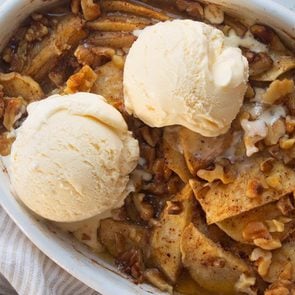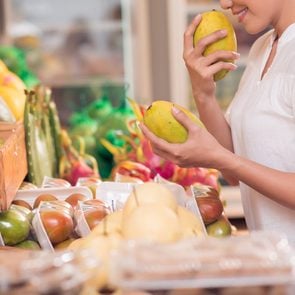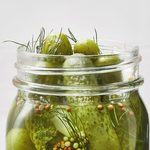Why Passing Down Family Recipes is the Greatest Gift
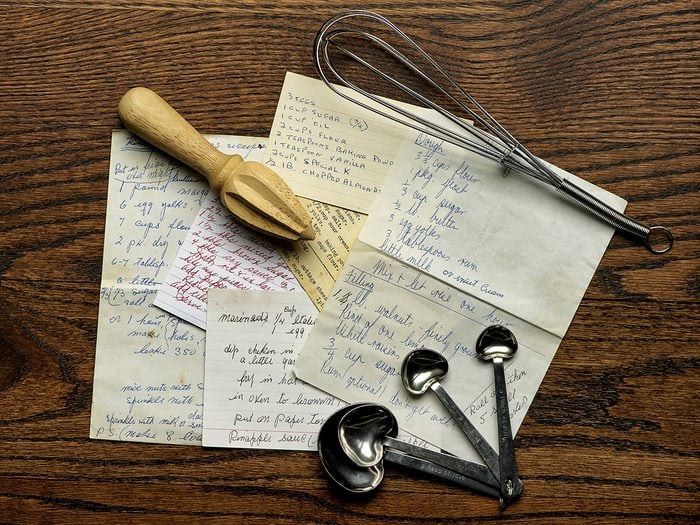
Although my mother's been gone for almost 25 years, I think of her every time I bake this apple cake.
One of my favourite desserts to serve to family and friends is Ruthie’s Apple Cake. It is one of my go-to recipes and always turns out delicious. The cake is moist and the baked apples, infused with cinnamon, are like a big hug on a plate for the people I love. Oh, and I usually serve it with a scoop of vanilla ice cream.
But what makes this recipe even more special for me is that it is one that I inherited from my mother, Ruthie. She’s been gone for almost 25 years, but I think of her every time I bake her cake. I think it would be fair to say that for those of us who cook recipes and dishes passed down from the people we love, the why of it, is something you can almost more easily feel than articulate in words. But I’m going to try.
Passing down recipes is about more than just food
Passing down recipes is not just about cooking what came before us, and it’s not (typically) about archiving the exact ingredients, proportions, steps to follow and ensuring credit to the originator of the dish. Passing down recipes is more like sharing stories. Recipes passed down through families are full of memories of past generations, experiences, and people.
I’ve been thinking a lot about this lately, about the way food connects us. I’ve just completed a new cookbook that I’ve written with my daughter, Anna, and it has been a wonderful experience. Anna is one of those very rare people who is incredibly gifted at everything she does, including cooking. As her proud mother, it’s so meaningful to now have her as a colleague in the kitchen. I love that food is an important connection for us, and I know that, with Anna, some of my most beloved recipes, like my mother’s cake and my grandmother’s challah, will continue and thrive in our family.
Sometimes recipes are passed down with intention, parents or grandparents teaching their children about the importance of traditional dishes and their significance at the family table. And sometimes they take on new life. When people leave home for so many reasons—because of war, fear of persecution, education, employment opportunities or to reunite with family elsewhere—family-favourite recipes travel with them almost like a security blanket. Some people will search forever until they find what they need to prepare a particular dish in the way they are used to (our world is getting smaller and we are now more easily able to import specific ingredients from abroad), while others will adjust the recipe with ingredients more easily found in their new locale. None of that changes the recipe being a comforting reminder of home.
The evolution of a family favourite
While the specifics of a passed down recipe may change over time for many different reasons, the personal meaning the recipe holds does not. Case in point: I recently made Ruthie’s Apple Cake with pears. It was an accident (I was out of apples but did have pears on hand), and it was terrific. The last time Anna made the same cake, McIntosh apples weren’t available at the grocery store and so she used honeycrisp. Anna also used a measure-for-measure gluten-free flour instead of all-purpose flour, which certainly wasn’t relevant in Ruthie’s day! None of these substitutions changed what that cake means to us and the happiness it brings to us to cook it, to serve it to others and watch them enjoy it, and to think about Ruthie all through the meal. We don’t love these recipes because they are exactly the same; we cherish them because of the stories and memories they bring to mind.
The way my mom Ruthie made the cake offered a window into the culture and moment in history in which she lived and baked. She made the cake by hand. You still can, but, when I share the recipe, I also offer the option to use a stand mixer or food processor. Whereas so many cakes are covered in frosting, Ruthie’s cake is sprinkled with sugar. That’s a classic apple cake and I know from speaking to so many people that it’s the kind of dessert that was part of so many households just like ours.
In fact, I know that my husband Ray feels the same way about his mother Pearl’s apple cake that I do for Ruthie’s recipe (so much so that after almost 40 years of trying to recreate it, I still haven’t quite figured it out—but I’ll keep trying).
To me, food is such an important way to nourish and to celebrate. For example, Anna and I have been experimenting with our latke bar at home. Latkes are potato pancakes traditionally made during the Jewish holiday of Hannukah. Our family’s traditional latkes are just the way my mom made them—thin and crisp and (in my opinion) perfect. But being the cook and recipe writer I am, I can’t resist trying new things, so our family latke tradition has evolved. Anna and I now make multiple types of latkes. Sometimes we’ll use sweet potato or other root vegetables to provide a new spin to an old favourite. We’ll also serve them with some unexpected toppings. Sure, sour cream and apple sauce are always at hand, but sometimes we’ll also include smoked salmon, labneh (or Greek yogurt), tahini sauce and even guacamole.
But we always include Ruthie’s original latkes on the holiday table and remember her and my father, Max. And even though I use Yukon Golds instead of the baking potatoes Ruthie used, I still think of my parents and feel a little more whole inside.
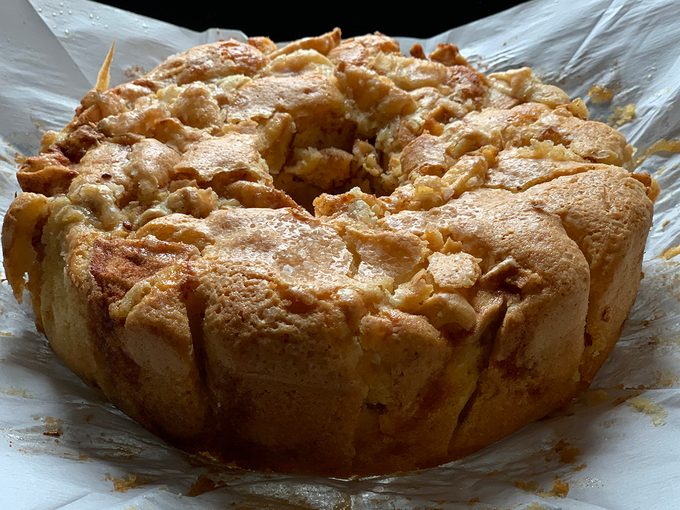
Ruthie’s Apple Cake Recipe
This is the cake my mom made almost every Friday night. I still love it. Use McIntosh apples for the texture I like best—they do not keep their shape well and kind of melt into the cake a little—which, in this case, is a good thing. But if you can’t find them use what you have.
If you use a tube pan that has a removable bottom, wrap the outside in aluminum foil in case it leaks and spray the inside well so that you can turn it out (very carefully).
Makes 10 to 12 servings
Ingredients
- 1-1/2 cups all-purpose flour (or Cup4Cup gluten-free flour)
- 2 tsp baking powder
- 1/2 tsp kosher salt
- 2 eggs
- 1 cup granulated sugar
- 2/3 cup extra-virgin olive oil (or unflavoured vegetable oil)
- 1/4 cup orange juice
- 1 tsp pure vanilla extract
Filling: - 2 lbs McIntosh apples, peeled, cored and coarsely chopped (about 6), about 6 cups
- 2/3 cup brown sugar
- 1-1/2 tsp cinnamon
Topping: - 2 tbsp coarse sugar, optional
Method
- Preheat oven to 350F. Line a 9″ springform pan or 9″ round deep baking pan with parchment paper.
- In a medium mixing bowl whisk together flour, baking powder and salt about 60 seconds.
- In another large bowl whisk (or use a hand mixer) beat eggs and sugar until light and slowly drip in oil until well combined. Mix in orange juice and vanilla. With a wooden spoon stir flour mixture into egg mixture just until combined and no flour is left unincorporated.
- Combine apples with brown sugar and cinnamon.
- Spread about half the batter over the bottom of the pan (about 1 1/2 cups). It will not seem like enough. Don’t worry. Spoon in all the apples. It will look like too many apples. Don’t worry. Drizzle with remaining batter—also don’t worry if it doesn’t look like there’s enough. Sprinkle with coarse sugar.
- Bake 50 to 60 minutes until browned and firm in the centre or until an instant-read thermometer registers at least 185F.
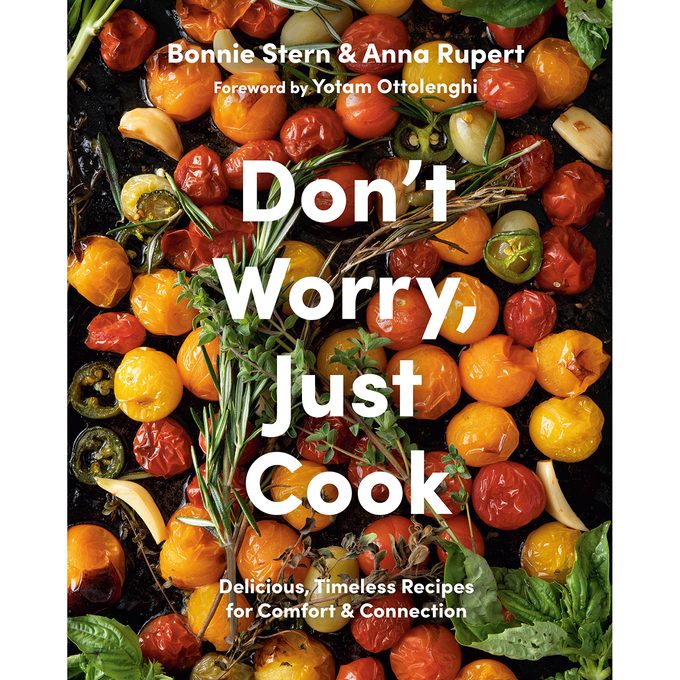
Bonnie Stern is the bestselling author of 12 cookbooks and was recently inducted into the Taste Canada Hall of Fame.
From Don’t Worry, Just Cook by Bonnie Stern and Anna Rupert, published by Appetite by Random House, an imprint of Penguin Random House Canada. Copyright © 2022 Bonnie Stern Cooking Schools Ltd. and Anna Rupert. Reprinted by permission of the publisher.
Next, find out the best apples for apple pie.
